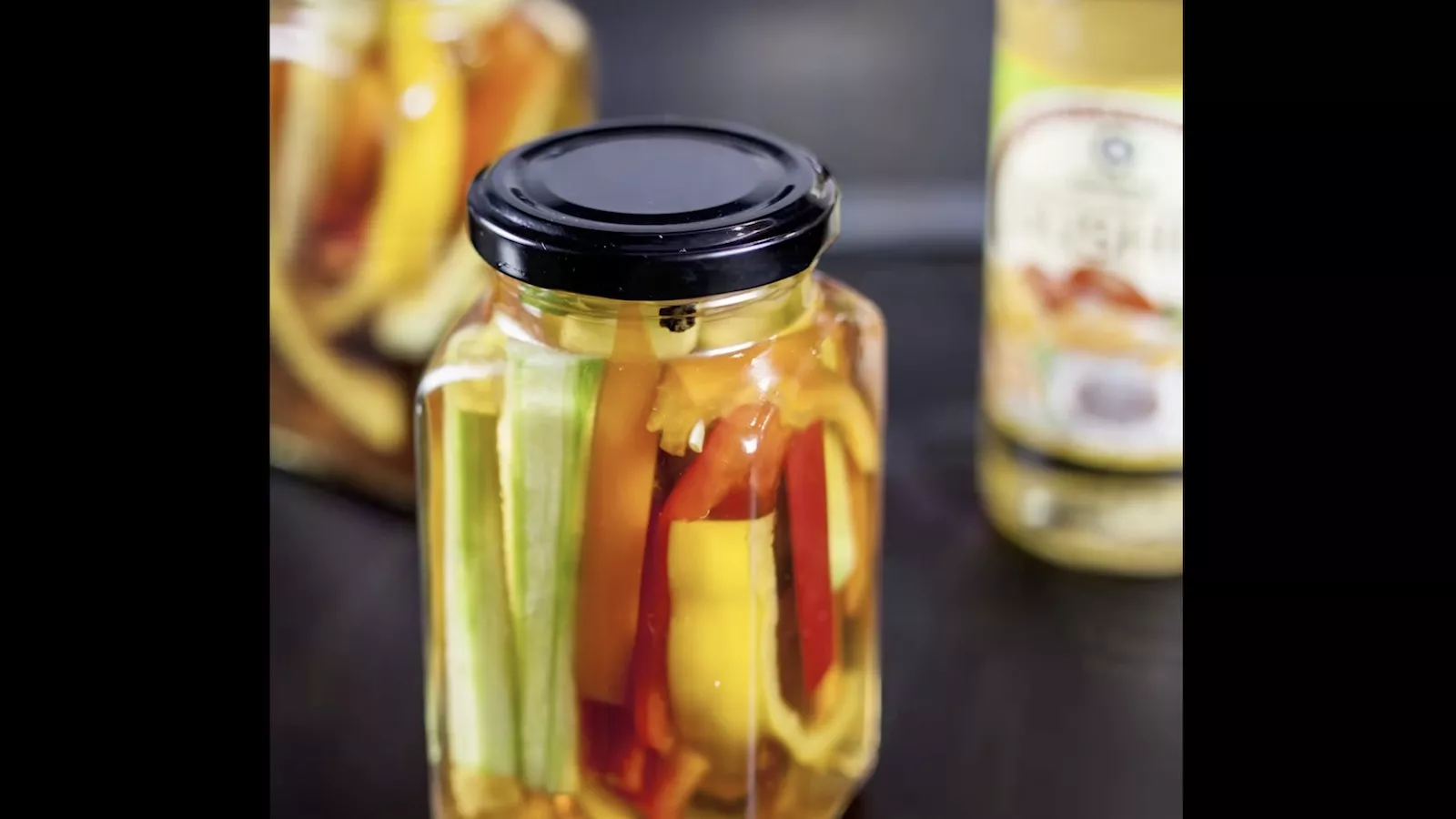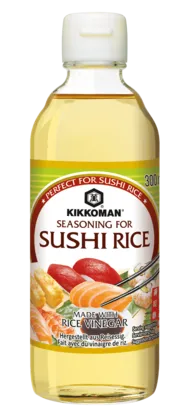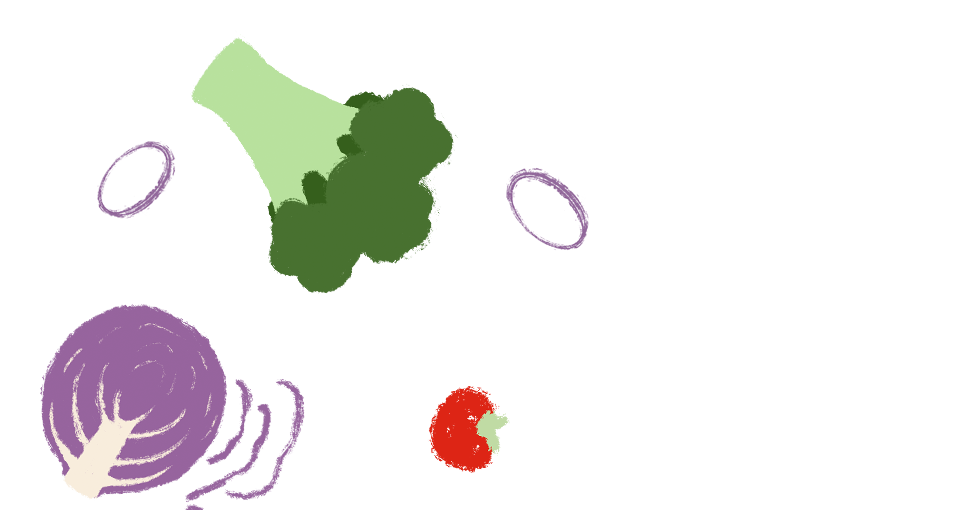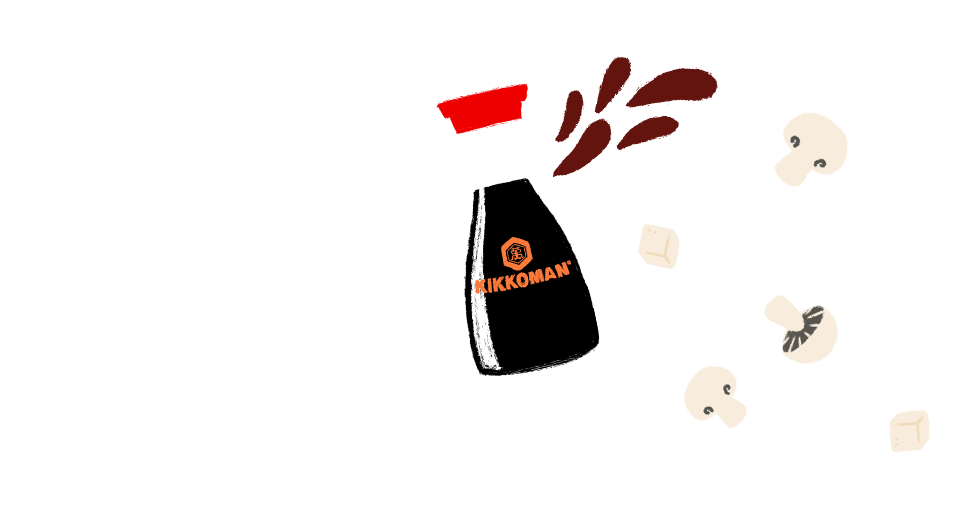Fermenting Food
07. August 2023
![[Translate to Englisch (EU):] [Translate to Englisch (EU):]](https://www.kikkoman.eu/fileadmin/_processed_/a/3/csm_Blog_Fermenting_Header_Desktop_8a806bac48.webp)
Science in the kitchen
Anyone can ferment food. The process is really simple. All you need to do is layer sliced fruit or vegetables in a jar, top it up with brine and make sure it’s tightly closed. Alternatively, you can use a mixture of sugar, vinegar and Kikkoman Naturally Brewed Soy Sauce (or the 43% less salt or gluten-free versions) to add flavour. Other spices such as chilli or cinnamon can add an exotic touch without affecting the fermentation process. Fermentation starts as soon as bubbles form in the jar. It’s best to store the jars at 22 to 23 °C for the first few days, before moving them to a cooler spot – ideally 15 to 18 °C. This provides the optimum conditions for the enzymes, sometimes also called “ferments”, to convert carbohydrates into lactic acid, which has a preserving effect. This sour environment kills germs that would otherwise cause the food to spoil, so the fermented product lasts longer. Vitamins, such as Vitamin B and Vitamin C, and probiotic bacteria are preserved. This can provide the gut with beneficial bacteria and improve digestion. And that's not all. The fermentation process also adds a unique, intense flavour to food. Try it yourself and see!
Tsukemono – Japanese fermented vegetables
Fermented cucumber, nattō (fermented soybeans) and the miso in miso soup are three of the fermented foods that most Japanese people eat regularly – even for breakfast. Tsukemono is the name of the fermented vegetable dish that’s served as an accompaniment to almost all meals in Japan, alongside fermented condiments such as Kikkoman Naturally Brewed Soy Sauce (or the 43% less salt or gluten-free versions).
Japanese people use a tsukemono-ki to make their own tsukemono. That’s a container, traditionally made of wood, glass or ceramic. Once all the ingredients have been added, a two-kilo tsukemono-ishi (a “stone for preserved things”) is placed on the containers to create an airtight seal.






![[Translate to Englisch (EU):] [Translate to Englisch (EU):]](https://www.kikkoman.eu/fileadmin/_processed_/c/d/csm_1039-recipe-page-Easy-Carrot-soup_mobile_7366116d92.webp)

![[Translate to Englisch (EU):] [Translate to Englisch (EU):]](https://www.kikkoman.eu/fileadmin/_processed_/c/5/csm_MainDishes_recipe-collection_desktop_2x_ef5962097e.webp)
![[Translate to Englisch (EU):] [Translate to Englisch (EU):]](https://www.kikkoman.eu/fileadmin/_processed_/b/e/csm_1101-recipe-page-Authentic-Japanese-soy-sauce-ramen_mobile_6bf05afcae.webp)
![[Translate to Englisch (EU):] [Translate to Englisch (EU):]](https://www.kikkoman.eu/fileadmin/_processed_/e/b/csm_918-recipe-page-pumpkin-hummus_mobile_d372eb934b.webp)

![[Translate to Englisch (EU):] [Translate to Englisch (EU):]](https://www.kikkoman.eu/fileadmin/_processed_/0/d/csm_928-recipe-page-prawn-and-vegetable-stir-fry-noodles_mobile_78dc5b25bc.webp)




